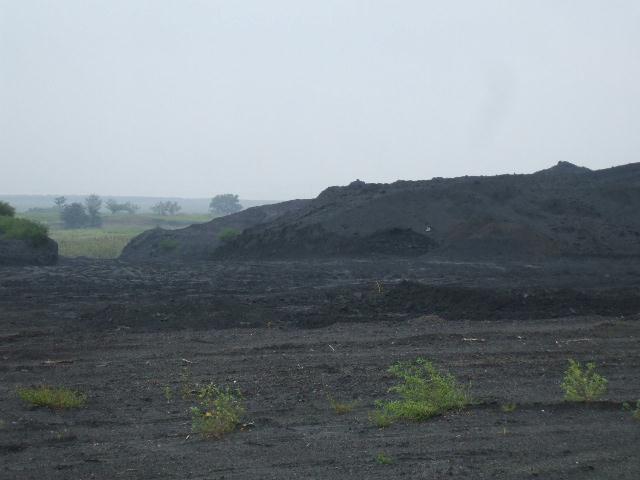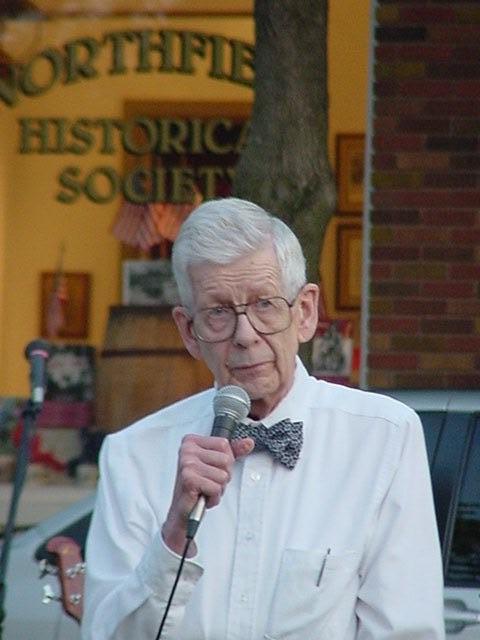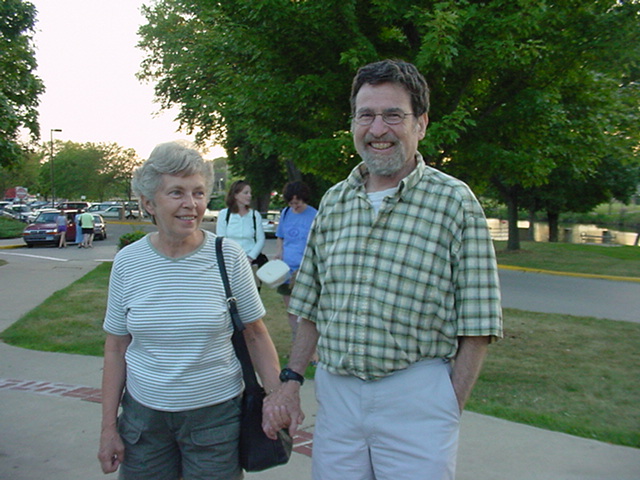Coal Fly Ash NON-Regulation
September 12th, 2007

Dumped coal fly ash at Pigeon Point, taken yesterday.
Coal Fly Ash… dumping it, using it for purposes we’re not aware of… It’s happening everywhere. I think that’s what’s sitting outside the USG ceiling tile plant just south of Red Wing. Coal fly ash is not regulated, it’s deemed “not hazardous” though it’s just a semantic obfuscation of the character of the stuff. In Minnesota there are regulations, but the regulations are about what you CAN use coal fly ash for, and not addressing the components of coal fly ash. Here’s the run down for Minnesota, where coal fly ash can be combined with dirt in a feedlot to “stabilize” the soil… STABILIZE???
“Feedlots Stabilizing with Coal Ash”
From a report, “Engineering and Environmental Specifications of State Agencies for Utilization and Disposal of Coal Combustion Products: Volume 2 – Environmental Regulations” you can learn how this is addressed by each state. In Minnesota:
Minnesota
Under Minnesota regulations, fly ash, bottom ash, slag, and flue gas emission control waste generated from the combustion of fuel which is at least 51% coal or other fossil fuel and the balance of the fuel does not contain hazardous waste is exempt from regulation as hazardous waste, MINN. R. 7045.0120(1)(F).Minnesota regulations provide that CCB, when used in accordance with MINN. R. 7035.2860, have a standing beneficial use determination. A standing beneficial use determination means the generator or end user of a material can do so in accordance with applicable rules without contacting the agency. Standing beneficial uses for coal ash include:
• Coal combustion slag when used as a component in manufactured products such as roofing shingles, ceiling tiles, or asphalt products.
• Coal combustion slag when used as a sand blast abrasive.
• Coal combustion fly ash as defined by ASTM C618 when used as a pozzolan or cement replacement in the formation of high-strength concrete.
• Coal combustion fly ash or coal combustion gas scrubbing by-products when used as an ingredient for production of aggregate that will be used in concrete or concrete products. This does not include use in flowable fill.
MINN R. 7035.2860(4)(K), (L), (M), (N).
Materials that are beneficially reused are not exempt from storage standards set forth in MINN. R. 7035.2855. The storage design standards are intended to prevent contaminants from migrating into ground or surface waters and prevent nuisance conditions from occurring on the storage facility. The Minnesota Pollution Control Agency will consider proposed beneficial uses not listed as a standing beneficial use on a case-by-case basis. To be considered a beneficial use, the
material:
• May not be special actively accumulated.
• Must be characterized in accordance with R. 7035.2861.
• Must be an effective substitute for an analogous material or a necessary ingredient in a new product.
• Will not adversely impact human health or the environment.
• Is not used in quantities that exceed accepted engineering or commercial standards.
Minnesota Pollution Control Agency, 520 Lafayette Road North, St. Paul, MN 55155-4660.
Contact: Matt Herman, (651) 296-6603; Web Site: www.pca.state.mn.us.
The above is from the University of North Dakota (coal country, remember?), which is home of the Coal Ash Research Center.
There’s a federal EPA docket open on this, click below for docket:
To get to the docket, copy this docket number:
EPA-HQ-RCRA-2006-0796
and click on this “regulation” link and fill out, specify search “EPA” and that you’re looking for a docket, and paste the docket number in. Here’s the link to click:
In Delaware, they’re proposing sending fly ash and sewage sludge to a dump that’s been “closed” but at which they’re dumping, and worse, “Part of the design requires the use of thousands of “wick” drains around the site to quickly draw liquid from the surface of the disposal area into underlying aquifers.” It’s located on the banks of the Delaware River… WHATEVER ARE THEY THINKING????
You can find Delaware’s take on regulation (and lack thereof) in that UND report, “Engineering and Environmental Specifications of State Agencies for Utilization and Disposal of Coal Combustion Products: Volume 2 – Environmental Regulations” at page 15.
There’s a hearing tonight about DNREC’s role in dumping fly ash and sewage sludge, that’s TONIGHT, at the Rose Hill Community Center located at 19 Lambson Lane in New Castle, Delaware, at 6:00 PM.
From Alan Muller, Green Delaware, some questions to ask:
- What is DNREC’s role?
- What does DNREC plan to do about this?
- When are they going to really CLOSE the dump?
- What are they going to do to clean it up?
- Where’s the criminal investigation of this dumping in a closed dump?
From the News Journal:
Old dump at port eyed for tons of ash
Key contractor for job has record of offensesBy JEFF MONTGOMERY, The News Journal
Posted Friday, August 31, 2007Wilmington and federal officials are considering a multimillion-dollar deal that would send 2 million tons of power plant fly ash and sewage sludge to a closed dump near the Port of Wilmington.
The proposed agreement — which could be finalized as early as next month — drew protests from some environmental groups concerned about threats to the river and groundwater posed by huge volumes of ash coming from coal-burning power plants.
State environmental officials questioned other aspects of the plan — including the sheer amount of ash. The material would be deposited in a series of 300-foot-wide berms near the river to create a 10-foot-deep, 110-acre storage bowl.
“We’re still looking at what regulatory oversight we have, and if there are additional controls that we might like to exercise,” said David Small, deputy secretary of Delaware’s Department of Natural Resources and Environmental Control.
A key contractor for the project, Headwaters/VFL Technologies, was fined $100,000 earlier this month for a string of environmental offenses, with dozens of other violations still under review.
Headwaters would be the sole contractor under the proposed three-year job that could be worth more than $50 million in gross revenues, based on current industry-reported prices for disposal of ash.
“We’re working to finalize a draft … and we’ll hopefully issue the final agreement with the city of Wilmington on Sept. 21,” said Charles J. Myers, project manager for the Army Corps of Engineers.
In April, a Wilmington official said that the city had retained an engineering company to design a reopening of the dump, a dredge spoils site near the mouth of the Christina River. Head-waters/VFL would spend an estimated $3.5 million to build berms needed to contain the spoils “at no cost to the corps” in exchange for a city right to use stabilized sludge for construction material.
William S. Montgomery, chief of staff to Wilmington Mayor James M. Baker, said late Thursday he was unaware of schedules under the agreement. Montgomery also said the city does not know how much Headwaters earns under its subcontract for managing the 50,000 tons of treated sewage — called sludge — produced by the northern Delaware wastewater plant annually.
“We’re not trying to do anything other than find uses for our sludge, so we don’t have to drop it in its unadulterated form in the landfill,” Montgomery said.
Under the process, Headwaters mixes treated sewage sludge with fly ash from power plants. While officials have long considered the mixture safe, questions have been raised recently about its toxicity and its effect on the environment.
“Unbelievable! The materials are loaded with toxins and infectious agents and they want, in effect, to dump it in the river,” said Alan Muller, who represents the environmental group Green Delaware.
Part of the design requires the use of thousands of “wick” drains around the site to quickly draw liquid from the surface of the disposal area into underlying aquifers.
The project has surfaced amid a widening national debate over environmental risks associated with coal combustion wastes. The Environmental Protection Agency this month released new data on potential cancer and ecological risks posed by mismanagement of fly ash and other power plant residues.
Burnt coal contains an assortment of heavy metals and other toxic compounds, but currently is regulated as a non-hazardous waste. Most of the 120 million tons generated annually now goes to landfills.
And Wilmington has emerged as a regional destination for fly ash and other products.
Ingredients for the Headwaters/VFL process include incinerator ash and dusts from refineries and a metal processing plant. Most of the material comes from out of state power plants.
Delaware Solid Waste Authority is demanding the right to review the plan, noting that it owns 56 acres involved in the proposal.
Contact Jeff Montgomery at 678-4277 or jmontgomery@delawareonline.com.
Service for Bob Jacobsen
September 12th, 2007
As reported in the Northfield News:
NORTHFIELD – Funeral arrangements have been announced for longtime Northfield businessman Robert “Bob” Jacobsen, 82, who passed away Thursday.
A representative of Bierman Funeral Home said Monday morning that visitation will be held Wednesday, Sept. 19 from 4 to 7 p.m. at the funeral home, 1316 Division St. S.
The funeral is scheduled for 11 a.m. Thursday, Sept. 20 at the First United Church of Christ in Northfield, 300 Union St.
A full obituary will be printed in a future edition of the Northfield News and will be available on the website.
Bob Jacobsen checks out…
September 8th, 2007
From the Northfield News:
City says goodbye to beloved businessman, Bob Jacobsen
See also Locallygrown and northfield.org…
Bob Jacobsen died this week, it’s such sad news. He will be missed. Bob was my “adoptive” father, mentor, and friend, without a doubt the most supportive and influential person shaping my life. Rollie had called and left a message and we connected later — I’m in the midst of the Chisago Transmission Project hearing, already a melancholy proceeding because it was Mike and Nancy Casper who got me fired up about transmission the first time the Chisago line was applied for. We logged more than a few miles in ‘96-98 going up to help them fight that one — and WIN! Mike died not too long ago, after having suffered from Ahlzheimers for several years. This is a photo of Mike and Nancy on Bridge Square the evening of the “grand closing” of Jacobsen’s store where most of Northfield came together and closed out an era:
To get that call about Bob’s death in a break between witnesses in this Chisago hearing was so appropriate — Bob always encouraged me to stand up and fight for what was right. We often disagreed about politics, but as often, came around from different views to complete agreement. He’s the one of his generation who I’ve spent the most time talking with, and learned much about things like WWII, marketing, and determination.
He “adopted” me not long after I met him while looking for a place to live after law school. I’d been living in Kenyon, and regularly looked down Division and thought I’d like to live there. After I got a good sized settlement on a case, I set out to find a home in “the canyon” of Northfield’s main drag, and started calling around, shots in the dark. A realtor referred me to Bob, and we chatted and I went to visit him and twist his arm more than a little. I did, and he didn’t protest too much. He showed me the apartment that was piled high with the former long-gone renter’s leftovers, and knew it was where I wanted to be, it felt like home. So he grinningly and begrudgingly agreed to get it cleaned out some, I agreed to do some painting, and I moved in. He hated cats and did not allow cats, as Maggie Lee will attest, but as he did with Maggie, he let me and my brown tabby “fish” live in the best rental unit in Northfield with the best view, the best landlord, and the best downstairs neighbors. Later, when the other tenant in the front of the building moved out, he let me rent out the other unit and tear out the wall between the living rooms, opening up a 36 foot living room with seven foot windows and fifteen foot ceilings. It was the brightest most delightful place I’ve ever lived (hell in the heat of August). I wanted to condoize it and stay there forever, but hard as I tried, that I could not convince him to do.
Bob was generous in every way. He opened up the town for me, a conservative with liberal introductions and the inside story, gleefully argued politics and traded lobbying tips, freely offered an awful lot of advice and a broad view of history. We spent a lot of time hashing out city politics, county politics, and state legislative races — Northfield’s in one of the most closely divided and hotly contested districts in the state, a good case against current redistricting schemes, which left District 25B in the shape of a jackass! (click here, squint, and you’ll see…)
In what would be our last visit, I brought Alan for introductions and Bob’s stamp of approval, and they quickly got a little rowdy trading stories of fighting garbage incinerators, Bob, about the one they’d planned for Northfield, and Alan about his in Delaware, New Jersey, Pennsylvania and now St. Paul. I didn’t know NSP had tried to pass off a Red Wing styled burner on Northfield, and didn’t know Bob was passionately against garbage burning and how much he promotes and believes in recycling (there’s always a twist that we don’t know about Bob!) Within minutes, those two were grinning and waving their hands in the air as they shared their victories and struggles. Bob was twinkling — he heartily approved and wished us well, and later put it in writing in a touching note. Well, ahem…he also called Alan my “dream dinghy.”
I’m oh so grateful to have been blessed with Bob Jacobsen. I couldn’t have asked for a better mentor — a tireless public watchdog and the most delightful pain in the governmental posterior! He had a full and good life, freely giving and “giving what for” to all who deserved it.
On Monday, it’s back to fighting the Chisago Transmission Project, and I’ll try to give NSP a few jabs in memory of Jake!
CRWP photos of Wolf Creek
September 3rd, 2007
The Cannon River Watershed Partnership is the only group keeping an eye on water in Rice County, well, the Cannon River Watershed, to be precise. And on August 24th, after the heavy rains, here’s some of what that eye, the camera of Beth Kallestad, sees:
This is the dam at Circle Lake, right by that “development” of Jerry Anderson’s, the one that was shut down by the Army Corps of Engineers for lack of a permit. In this photo, “Wolf Creek flows out of Circle Lake, where the two dogs died recently from drinking toxic algae in the lake water.”
This one is near “County Road 8, at a volunteer water quality monitoring station on the bridge below Claude and Marie Brown’s.”
This is a dramatic photo of the “confluence of Wolf Creek (green, right) and the Cannon River (brown, left) near Grandpa’s Farm on Hwy 3.”
Link: MPCA’s Impaired Waters List.
Catching Up – GRHR Opinion Page
September 3rd, 2007

FINALLY I’m getting around to posting the latest from the Grand Rapids Herald Review. In the first, someone’s not happy about CAMP, an effective group opposing the Mesaba Project:
A different kind of wind power
Herald Review
Last updated: Wednesday, August 29th, 2007 10:45:48 AMEditor:
I recently had a conversation with one of these C.A.M.P. fellows. He informed me that this wind power was the only answer to our energy needs. I said I agreed that wind power was probably a good thing, but from my observations and from everything I had read on the subject, the wind did not blow all of the time. Normally in the evenings and at night the wind dies down, so we would still need back-up power as industry, business, both small and large and almost everybody else in this day and age needs constant power 24 hours a day. He then informed me that I was just plain misinformed and that these wind turbines produced power 24 hours a day, seven days a week and 365 days a year where they were being built.
Later that day when I was contemplating what this fellow had expounded, I got to thinking, you know what this fellow said could probably be true if he would just round up the rest of his C.A.M.P. buddies and take them out and they could all pitch their tents around one of these wind energy farms because they all really do produce a lot of wind.
Frank Hendricks
Bovey
Project teaches an expensive lesson
Herald Review
Last updated: Friday, August 24th, 2007 04:34:25 PMBy Aaron Brown
When it comes to “job creation” projects in this region, most Iron Rangers take a well-worn wait and see attitude. After all, big shots have promised economic diversification since the beginning of our economy. We’ve seen a defunct chopsticks factory, tech centers that became defunct telemarketing centers and a decade-long attempt to turn our local peat bogs into fuel. Our hopes have been raised, dashed, raised and dashed again.
We’ve seen some success, yet today natural resources like taconite and wood products still provide the backbone of our local economy. No one has figured out how to solve that problem. We’ve survived because our unique state agency – Iron Range Resources – draws many millions each year in taconite taxes (in lieu of the property taxes that mines used to pay to our towns and schools) to build our communities and stimulate economic development.
The leaping and lurching nature of our economy produces either great victories or great failures. In 2001 and the years after, many leaders were almost in despair over the shutdown of several local mines, including the permanent closure of LTV. It was at this time that local officials on the IRR board gave or loaned almost $10 million to a group of lawyers and lobbyists calling themselves Excelsior Energy. It was an act of unmitigated trust in a company that has never produced a single kilowatt of power.
On Aug. 2, the Minnesota Public Utilities Commission voted to reject the power purchase agreement needed by this startup company to build Excelsior’s Mesaba Energy Project. The project is a large proposed power plant near Taconite that promises experimental new coal technology that would burn cleaner than traditional coal-fired plants. While commissioners endorsed the technology, they declared the proposal to be far too expensive and risky. They ordered Excelsior to continue negotiating with the big utilities to fix the problems, but those utilities have no reason to change their longstanding opposition.
Excelsior Energy gambled – almost successfully – that authorities would blindly accept a project that brought jobs and the promise of cleaner energy production to the Iron Range. But, in reality, this project failed the people.
Excelsior and many local, state and federal leaders of both parties failed to make a plan that would produce energy at a competitive price. They failed to honestly explain or question the logistical difficulties of building a large experimental coal gas plant in a place hundreds of miles from the necessary coal mines, carbon sequestration sites, and markets that need the power right away. Worse yet, Excelsior took subsidized loans and grants from the Iron Range people and used it to cover nearly all of their corporate spending.
Public documents from Iron Range Resources show how Excelsior is spending the $9.5 million Iron Range Resources loan from 2003 to present. It would appear that for years the loan funded nearly every aspect of the business – payroll, offices furnished with expensive décor, right down to their subscription to the “Wall Street Journal.” It seems there’s very little private money in this project at all. In addition, both the IRR and federal government have given millions in grants while the state provided many unprecedented shortcuts in environmental and regulatory laws.
The outcome of Excelsior’s spending of public funds is murky. Hundreds of thousands of dollars from the IRR loan went to consulting firms and legal offices in the Twin Cities – literally too many to list here. Certainly, much of that paid for legitimate expenses, but we have no accounting for how that money was spent or who exactly benefited from the spending. Or for that matter, who pays for the many Excelsior lobbyists who patrol the halls of the State Capitol each session.
I know who this spending doesn’t benefit: the people of the Iron Range. This project is a combination of the worst parts of socialism and capitalism. It relies on public money to survive while protecting a private company from market forces.
Excelsior officials will say that the IRR loan has a high interest rate and that they intend to pay it back. But the actual loan agreement is the legal equivalent of Swiss cheese, full of delicious holes. Furthermore, Excelsior is banking on getting PUC approval this year to receive generous federal tax credits. They also need the agreement to open federal loan guarantees so they can continue spending money. In reality, Excelsior probably won’t get PUC support this year for an Iron Range plant, despite what their officials say in the media. The whole project is and always was a long shot. Our state leaders should have created more protections for the money and the possibility of the company’s failure or alteration of their original proposal. Instead many accepted legal campaign donations from Excelsior’s lobbyists while giving the green light to any shortcut, regulatory change or funding request they were presented.
We Iron Rangers allowed the desperation of the early 2000s create this ugly, expensive mess. This “company” has spun the many virtues of coal gasification while, from day one, lacking the money necessary to build the super-clean, super-efficient plant implied. Everybody’s power bill goes up a little if the plant works, a lot if the plant fails (another risk in this new technology). My biggest fear is not a new power plant on the Iron Range, but a failed project. This project was always a tremendous risk. Anyone with Google could have found that out for themselves in 2002.
I know this is a complicated issue. We need jobs. We will, eventually, need more energy production in northern Minnesota. We shouldn’t do it this way. The Mesaba project, while claiming innovative technology, is actually just an innovative way to shield entrepreneurs from risk. Government should regulate and, when appropriate, aid private industry; they shouldn’t provide nearly all the startup capital. In short: Excelsior Energy’s proposal remains a risky boondoggle.
The people of the Iron Range deserve better. With a new, focused effort on homegrown economic diversification and infrastructure improvements, we can show the world what the word “innovation” really means. It’s up to the people who live here to take renewed interest in making the Iron Range open and competitive in the modern economy. We’ve just learned a very expensive lesson in what not to do ever again. I hope.
Aaron J. Brown is a columnist for the Hibbing Daily Tribune, a Superior Publishing Corporation newspaper. E-mail him at aaronjbrown@yahoo.com.


